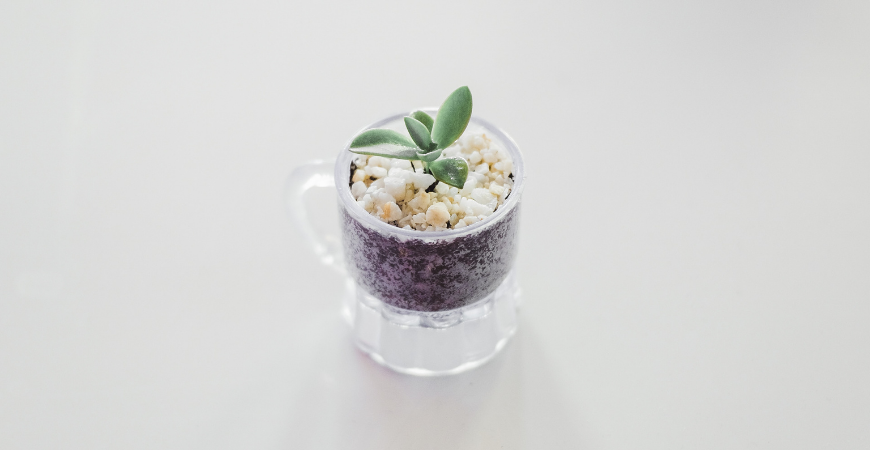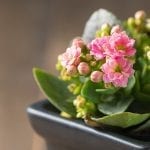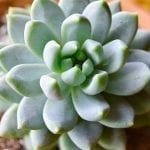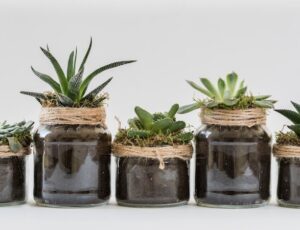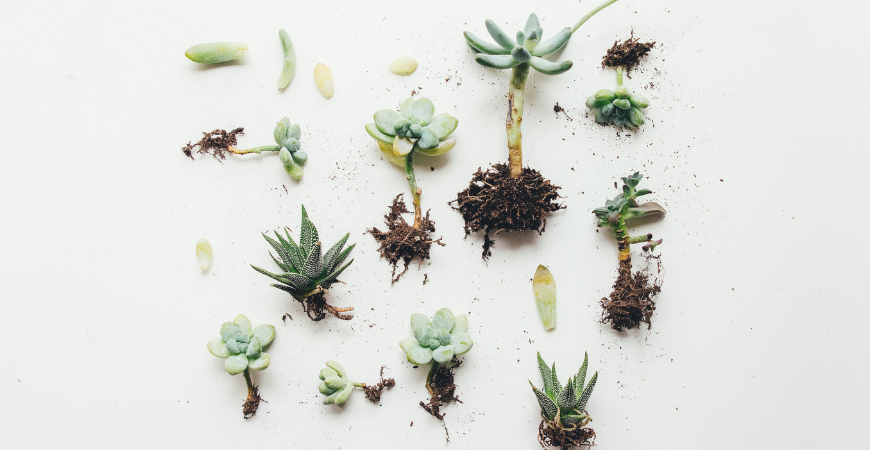
Top 7 Succulents to Easily Propagate
Do you enjoy growing succulents but wish you had more? Now, you can by propagating them! It’s an easy and inexpensive way to grow more succulent plants.
Propagation may be a big word, but creating multiple succulents from a single plant is simple. Here we’ll cover how to propagate succulents and which succulents are easiest to propagate.
What are the easiest succulents to propagate?
For beginners, start with succulents that are easy to propagate. Burro’s Tail, Sempervivum (Hens and Chicks), Aloe Vera, String of Pearls, Kalanchoe, and Jade plant are easy-care and easy to propagate.
With a little know-how, you can sprout new plants from a single succulent – one you already own – with a quick snip of a stem or leaf.
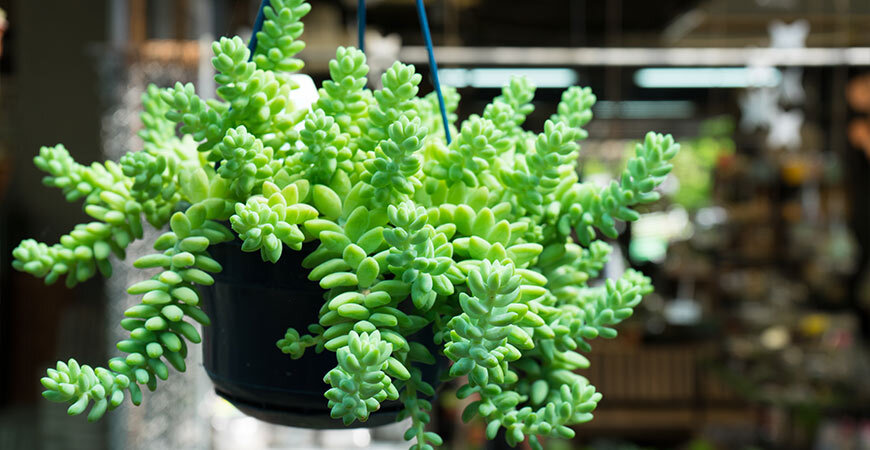
Burro’s Tail
This succulent is a type of sedum that practically multiplies on its own! When leaves naturally fall from the plant, they often root in the soil, thus creating tiny new sprouts.
But, you can help things along with propagation. Gather any fallen leaves, fill a container with cactus soil, and place them on top of moistened soil.
In a few weeks, the leaves will root, and new plants will begin to grow. Propagate them from cuttings as well.
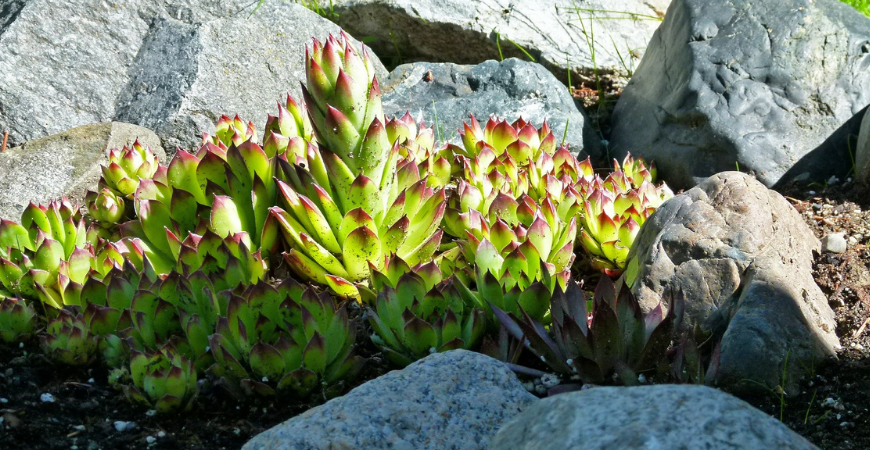
Sempervivum (Hens and Chicks)
Sempervivum, more commonly known as hens and chicks, is a low-growing succulent that can withstand most climates and temperatures. These succulents are cold-resistant and thrive outdoors in most U.S. plant zones.
They are nicknamed hens and chicks because of how fast this succulent reproduces and grows. This succulent option loves rocky environments- so these are the perfect plants to grow in a rock garden.
In spring, the main plant (a hen) will produce tiny plants (chicks) from the plant’s base. Leave “chicks” on the main plant until they sprout roots. Then, separate them from the mother plant, and plant them in a prepared container.
To separate the chicks from the hen, cut the stem that connects them with a sharp knife. Once separated, plant the chick in a container with room to grow.

Aloe Vera
Aloe vera is a popular indoor plant that is an exotic-looking succulent that can be propagated from offshoots or leaf cuttings. It’s best to multiply aloe vera by removing the “pups” which sprout next to the base.
To remove a “pup” from the plant, remove the dirt around the pup’s base and check for root growth. If you see roots, then it’s ok to remove the pup.
Use a clean, sharp knife to separate the new sprout from the main plant. Moreover, avoid damaging the roots when doing so. Once separated, plant the pup in a pot filled with cactus soil and place it in filtered sunlight.
Aloe vera can also be propagated through leaf cuttings, but the process takes longer, and the success rate is usually low.

String of Pearls
This succulent got its name due to its similarity to a pearl necklace. It’s identifiable due to the small, green “pearls” that grow along the thin, string-like stems.
It can be fussy about its growing conditions, but it’s easy to propagate.
To propagate a string of pearls succulent, trim a 4-inch strand from the plant and bury the cut end into the new soil. Moreover, keep the cutting out of direct sunlight and water sparingly.
In several weeks, it will have rooted in its new home. Furthermore, place them in an area where they can drape and have room to grow.
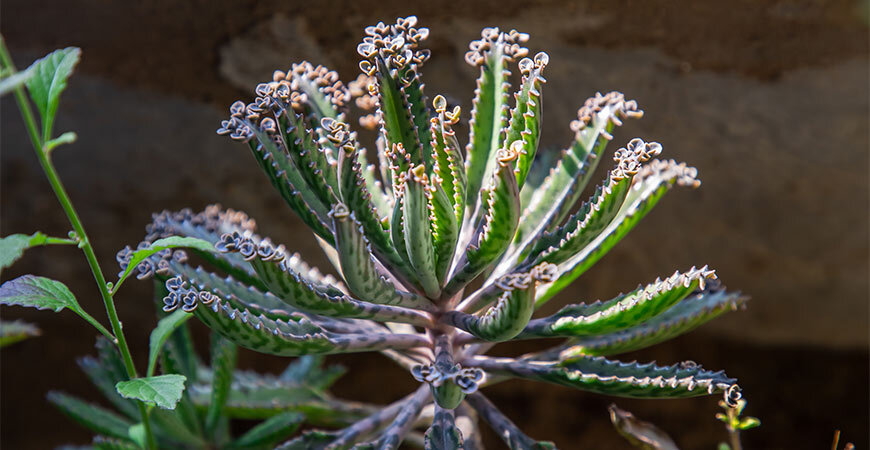
Kalanchoe delagoensis
Kalanchoe delagoenis is a popular succulent because it doesn’t require much care. Its scalloped, glossy green foliage makes these succulents easy to identify.
Furthermore, some varieties will flower in bright hues, including pink, yellow, red, orange, magenta, and white. The flowering varieties will bloom for several weeks.
It is nicknamed the “Mother of Thousands” because this succulent is a prolific grower. That means it often spreads on its own by sprouting tiny leaflets along a leaf edge.
When the leaflets are ready to sprout, they will fall to the soil. Simply gather them up and plant them in a new container.
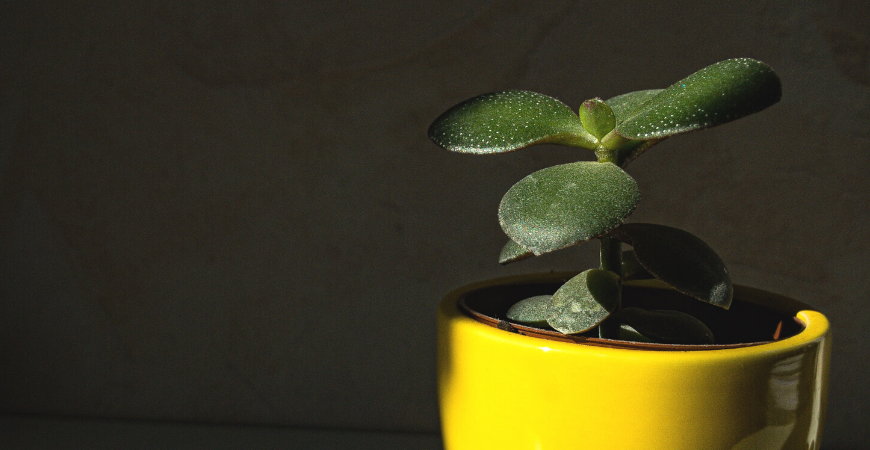
Jade Plant
A jade plant is another succulent option to consider when propagating due to its easy care requirements. One of the main characteristics is the cubby, oval leaves.
When it comes to propagation, then can be rooted in either stem or leaf cuttings.
To root a jade plants from stem cuttings, trim healthy stems 3 to 4-inches in length. Allow the cut ends to dry in a warm, dry location until a callus develops (one to two weeks).
Once the cut end has dried, plant them in a light soil mix –1/2 perlite and 1/2 soil. Then water sparingly.
To root a jade plant from leaf cuttings, snip a healthy leaf from the succulents and lay it on moist soil. The cutting will sprout tiny plantlets within one to two weeks.
The Sedum “Jelly Bean Plant”
With its plump bean-like leaves, the sedum “jelly bean plant” is another easy-to-propagate succulent. Another name for this succulent is “pork and beans.”
The yellow flowers that appear in the spring make it easy to recognize. Furthermore, the leaves will start to turn from green to red in the summer.
Jelly bean plants prefer warm to hot growing conditions and a sunny location. Be sure to bring them inside for the wintertime!
To propagate “pork and beans,” snip a few leaves from a mature plant and place them on top of moist cactus soil. The leaves will sprout roots in a few weeks, creating new plants.
Mature jelly bean plants will supply you with several leaves for propagation.
A General Guide to Propagating Succulents
What You’ll Need:
- Cactus Soil (or a mixture of 5 parts perlite, 4 parts potting soil, and 1 part coarse sand)
- Plant Containers
- Mature succulent plants
- Sharp scissors or pruning snips
- A small, shallow dish
- Spray bottle filled with water
To Propagate from Leaf Cuttings
- Remove a few leaves from the bottom portion of the stem by gently wiggling or twisting them until they come loose making a clean break with no rips or tears.
- Then, lay the leaves in a small dish. Be sure to set the leaves in indirect sunlight until the ends are dry and calloused. It may take one to three days.
- Add cactus soil to a small plant container.
- Place the dried leaves on top of the soil and mist with water until the soil is moist.
- When the soil is dry, mist again.
- Over time, small roots will develop at the cut end of the leaf.
According to Home Repair expert Bob Vila, transplant the baby succulent into a prepared plant pot by making a small dent in the soil with your finger. Place the sprouted leaf into the dent, cover it with soil, and mist with water.
To Propagate from Stem Cuttings
- Use pruning snips or sharp scissors to cut a 3 to 4-inch branch from the mother plants.
- Then allow the clipped end to dry out and callous over. It usually takes one to three days.
- To plant, gently push the stem end into cactus soil.
- Mist and place the container in a sunny spot.
In addition, according to Home Repair expert Danny Lipford, the best potting soil for succulents is loose-textured, easily aerated, and fast draining. And, avoid potting mixes that are peat-based since peat tends to stay moist and soggy.
Remember that not every cutting will take root and grow – usually, 6 out of 10 will be a success. Soon your succulents will multiply, providing new greenery to enjoy or give as gifts.
Do you have experience propagating succulents? Let us know your personal tips and tricks on growing your succulent collection in the comments below!


